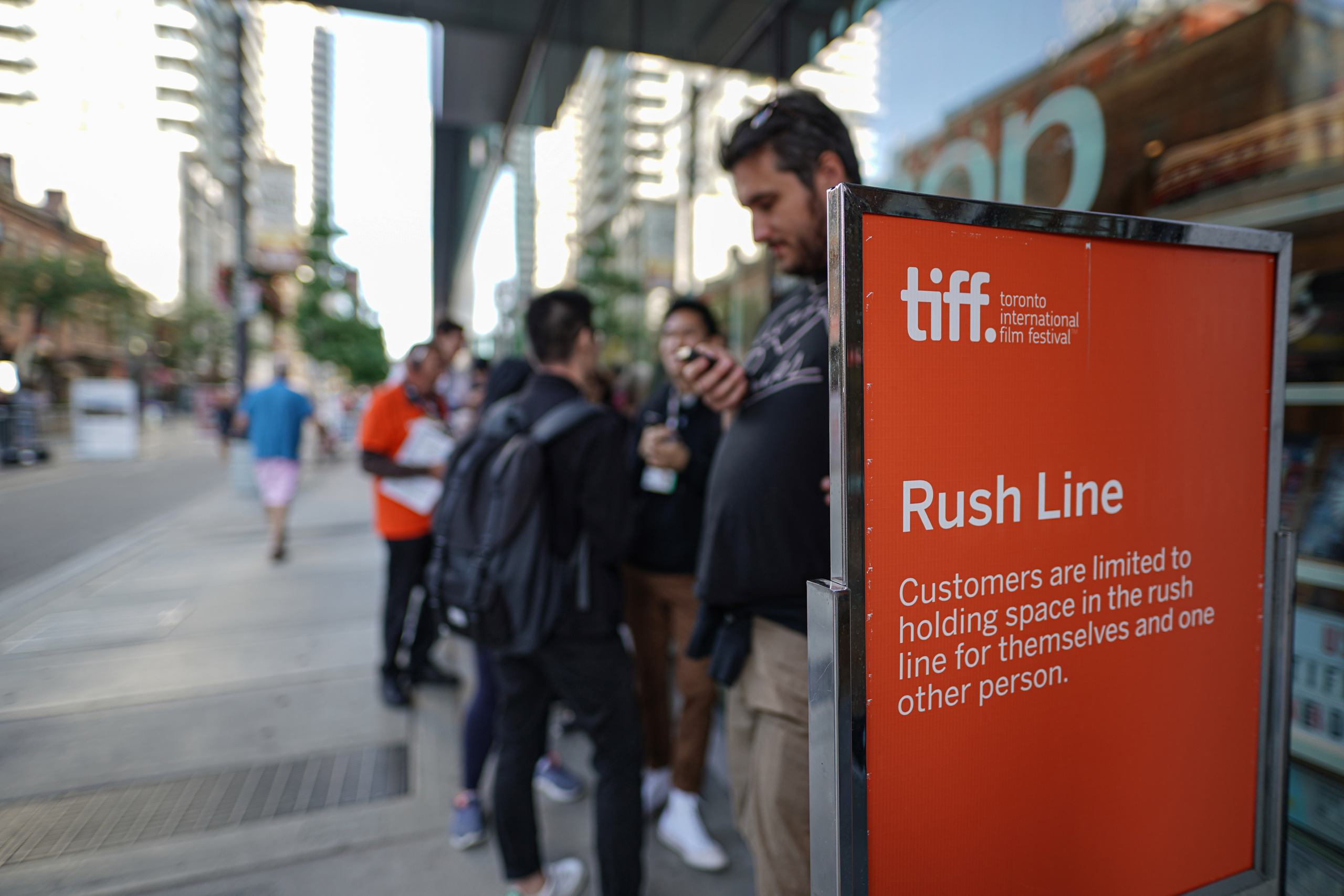Sign up for The Media Today, CJR’s daily newsletter.
Last year, the Toronto International Film Festival made a pledge that at least 20 percent of its media passes would go to under-represented journalists—women, people of color, LGBTQIA+ writers, and people with disabilities. It also created a media mentorship program, aimed at increasing access for critics and reporters who fall under that umbrella. But to walk the red carpet at TIFF with critics of color is to see how, even with new diversity programs in place, there are still gates closed.
Rendy Jones, a 21-year-old Black non-binary film critic from New York City, started writing and publishing film reviews on his website, Rendy Reviews, when he was 13. This year, Jones was thrilled to receive accreditation to TIFF for the first time, through the mentorship program. Before he was accepted, he fundraised for the trip through GoFundMe. “This would be my first time traveling outside the country specifically for a film festival, or ever, in fact,” he wrote on his page. Ultimately, the program reimbursed him for a 12-hour round-trip bus ticket and an AirBnB.
“It’s a huge privilege to be here,” he says. When he contacts publicists and introduces himself, Jones makes sure to mention his status as the youngest African-American film critic at TIFF, as well as his memberships in the Broadcast Film Critics Association and GALECA, the Society of LGBTQ+ Entertainment Critics. He knows the importance of selling himself and how he’s different from other critics, but he has mixed feelings about doing so. “It personally feels weird to me to give off a checklist of what people are looking for,” he adds.
ICYMI: Decades of failure on diversity
In addition to previewing movies, critics attend festivals like TIFF to network; a highlight for Jones was being assigned Jacqueline Coley, editor of Rotten Tomatoes, as his mentor, and he is now an approved Rotten Tomatoes critic. Jones also spoke to Rian Johnson, the director of Knives Out, at an afterparty. Jones found the conversation a little intimidating, since Johnson also directed the blockbuster space epic Star Wars: The Last Jedi. But Jones warmed him up. “He asked me for different suggestions on what to see,” Jones says.
For Jones and others, conversations like these are crucial. “There are so many people trying to become entertainment writers and critics who are trying to find their own spots in big major outlets,” he says. “I don’t want to read an interview with Jennifer Lopez by a 75-year-old white dude,” he adds.
Yolanda Machado, a freelance entertainment writer based in Los Angeles who has been covering entertainment since 2012, feels she was denied interviews because she wasn’t writing for The Wrap at TIFF this year. This presents a concern for a festival that seeks to include voices outside of the mainstream. But she was still planning to contribute to major publications like GQ, Marie Claire, and Shondaland, and submitted 16 requests for interviews. “I was denied across the board,” she says.
“I think diversity very much favors white women,” Machado says. That’s true throughout the film criticism world: the most recent data analysis from the Annenberg Inclusion Initiative at the University of Southern California shows that white women make up 17.6 percent of film reviewers across the top 300 films, compared to 13.1 percent written by non-white male critics and 3.7 percent written by non-white female critics. The sample, of 2,413 people, also found the number of critics who were white women (574) was greater than the combined total of male (338) and female (212) critics from under-represented backgrounds.
Smaller and international films at TIFF were much more proactive about reaching out to underrepresented critics like Mochado, but the economics of film reviewing discourage that coverage. “I would love to cover that, but they can’t pay my bills because that’s not what GQ or others want,” she says.
Valerie Complex, a 36-year-old freelance critic, says, “I see younger white people skipping ahead and journalists of color on staff pigeonholed.” She wishes movies such as Blade Runner 2049, Ghost In the Shell, and Uncut Gems were reviewed by more critics from underrepresented backgrounds, because of how those films portray non-white characters, Asian aesthetics, and Black culture. “These are movies with white directors but they’re still movies about race,” she says. “Whiteness affects us too.”
Editor’s note: Karen K. Ho received media accreditation to the Toronto International Film Festival for the first time, but did not receive financial resources to attend. She identifies as Asian, female, and queer.
ICYMI: Missing the Story
Karen K. Ho is a freelance business, culture and media reporter, based in New York. She is also a former Delacorte Fellow at CJR. Follow her on Twitter @karenkho.


